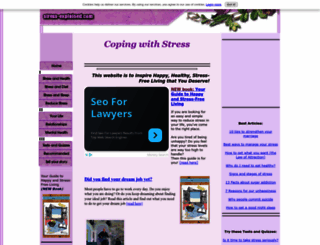Stress Explained - How to Manage, Prevent, Reduce & Cope with Stress
Page Load Speed
4.9 sec in total
First Response
67 ms
Resources Loaded
4.1 sec
Page Rendered
764 ms

About Website
Welcome to stress-explained.com homepage info - get ready to check Stress Explained best content right away, or after learning these important things about stress-explained.com
Test your stress levels here and find out all about coping with stress. Learn how your diet, sleep and relationships may affect your stress levels. Read our articles and feel healthier and happier.
Visit stress-explained.comKey Findings
We analyzed Stress-explained.com page load time and found that the first response time was 67 ms and then it took 4.9 sec to load all DOM resources and completely render a web page. This is a poor result, as 70% of websites can load faster.